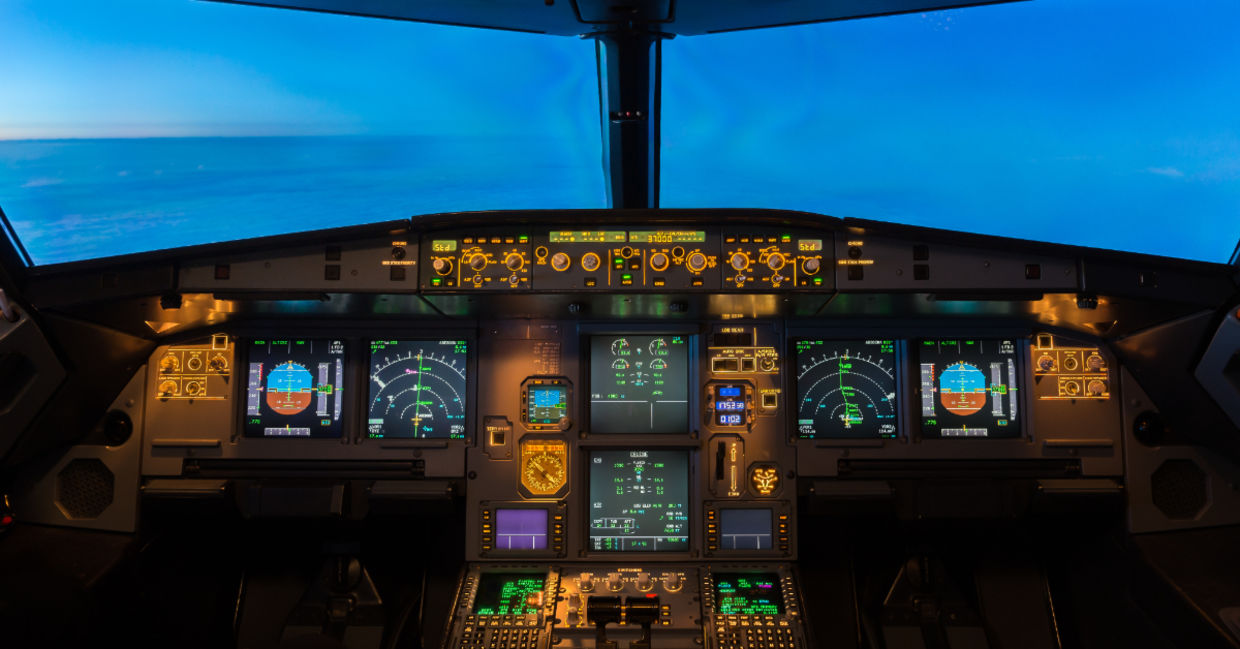
(Mikko Ryynanen / Shutterstock.com)
What if the future held not only self-driving cars, but rather ordinary cars operated by robot chauffeurs? This may sound far-fetched, but when it comes to aviation, the future is already here.
According to Interesting Engineering, “Pibot” (a combination of the words pilot and robot) is the name of the humanoid robotic co-pilot developed by the Korea Advanced Institute of Science and Technology, and it's ready to take to the skies!
Adapted to the Cockpit
David Shim, one of the researchers involved in the project told EuroNews, "Pibot is a humanoid robot that can fly an airplane just like a human pilot by manipulating all the single controls in the cockpit, which is designed for humans.”
That means that Pibot has a similar form to a human pilot and can fit comfortably in a pre-existing cockpit, without the cockpit needing to be modified. Pibot is about 5.2 feet tall and weighs almost 145 pounds, with arms and fingers designed to dexterously grasp and manipulate cockpit controls. Pibot also has camera “eyes” that let it see and respond to what is happening around them.
"The human form may not be super efficient, but we specifically designed Pibot to be a humanoid form,” Shim explained, “Because all the things are built for humans. We can have eight arms and four eyes, but we find the human form is somehow optimal.”
ChatGPT Integration
Pibot uses Artificial Intelligence to move the cockpit levers, communicate with other pilots, and make decisions on the go. According to Shim, Pibot’s large memory gives it advantages over human pilots. For example, Pibot’s been able to memorize all of the Jeppesen aeronautical navigation charts, something that humans can’t do, and it can use its navigational knowledge to build flight paths in real-time.
Additionally, whereas humans can typically learn to fly only a handful of airplane models and configurations, Pibot may be more versatile.
"Humans can fly many airplanes, but they do have these habits built into them. So when they try to convert to different airplanes, they must take another qualification,” said Shim. “Sometimes this is not that simple because our habit remains in our mind that we can’t simply change from one to the other. With the pilot robot, if we teach individual airplane configuration, then you can fly the airplane by simply clicking the airplane's type.”
Pibot is also equipped with a large language model, like ChatGPT. This allows it not just to fly the airplane, but also to communicate with others in the cockpit and to receive real-time instructions from air traffic controllers.
Plus, because Pibot understands natural language, the research team was able to teach it not just using flight simulators, but also through “book learning,” by feeding it airplane operation manuals.
“We had our predecessor of a pilot robot in 2016,” Shim explained. “At the time, we didn't have good AI technology, so what we built was a simple robot. They cannot really learn anything from the literature or the manual. But recently with ChatGPT or with other large language model systems, the technology made paramount progress.”
The Future of Flying
Although Pibot may have advantages over human pilots, don’t worry, it’s not taking any pilot jobs away from humans anytime soon. According to Futurism, the mechanical pilot is only expected to be fully operational by 2026, when it may be used in military contexts, since the bot was contracted by South Korea’s defense department. Additionally, Pibot may, in the future, captain flights to extreme environments where it is dangerous for people to travel to.
Simple Flying elaborates that Pibot is well-adapted for such extreme and emergency conditions. Not only can it respond to changing circumstances on the fly (pun intended), but it can also physically withstand these harsh conditions, which may cause the aircraft or controls to vibrate and shake. Shim explains that, “It uses high-precision technology to control its arms and fingers to operate an aircraft, even with severe vibration.”
In a statement to Yahoo! News Shim adds that “Human pilot is great and understanding the context and handling complex situation, but they often failed to remember every detail of those flight manuals especially when they are in trouble. So, our Pibot is capable of understanding and remembering literally everything in the manual, and then they can execute without any kind of emotion, or you know panic, especially during an emergency situation. And they can handle the situation according to the manual, which they can retrieve in microseconds.”
Pibot represents a huge leap in aviation technology and may revolutionize the future of unmanned flights especially in areas where manned flights cannot go. But for now, please make sure your seatbelt is fastened and secure all baggage. Put your tray tables in the upright position and prepare for take-off. Destination: The future!
YOU MIGHT ALSO LIKE:
Fire Fighting Robot Can Save Lives
How a Robot Helps Kids With Autism Communicate Better
Meet the Robot That Really Cleans Up







